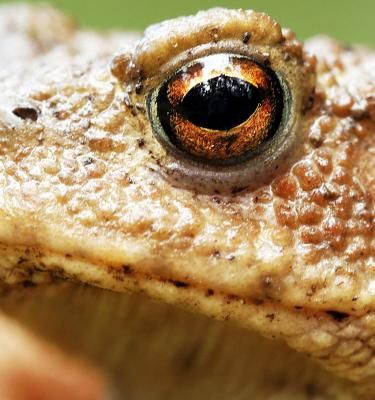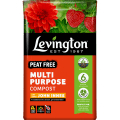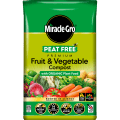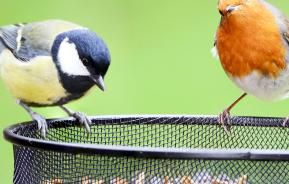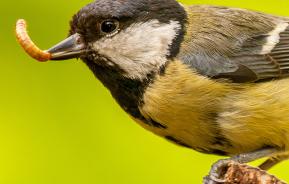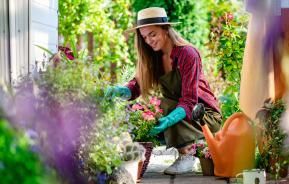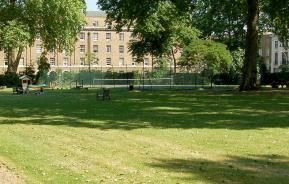As you spend more time working outside, it's not unusual to find yourself becoming more aware of just how full of wildlife your garden is. Suddenly you're noticing the tiny creatures in the soil and thinking of your own planting as part of an ecosystem.
Our guide to garden wildlife gives you the lowdown on some of the species you're likely to encounter over the course of the gardening year, and how to make them welcome.
Insects
While some non-gardeners are squeamish about creepy crawlies, those of us with green fingers tend to think otherwise. Top of our garden wish list are pollinators - those insects we rely on to pollinate our plants and keep our gardens flourishing. Unfortunately, two of our leading pollinators, bees and butterflies, are currently in decline.
When it comes to bees, one way to encourage them is to become a beekeeper yourself, but this requires a time commitment and a certain amount of free space. If this isn't doable for you, consider growing specific plants that are known to attract them instead. Try Sweet william, Crocus or Lavender for bees, and Roses, Buddleia or Lilacs for butterflies. Above all, avoid using pesticides on flowering plants while they're in bloom, or make sure the open flowers are not sprayed. Chances are, you'll attract other pollinators, too. Special insect homes are available and 'Bee Houses' are a great way to help them survive.
Hedgehogs

Known as the ‘gardener's friend’, hedgehogs have started to become popular as household pets in recent years - but they're actually nocturnal by nature, so for most gardeners, they're a rare sight. In fact, if you spot a lone baby hoglet in your garden it's likely to be an orphan, so it’s always recommended to call your local rescue centre straight away.
If you’ve spotted older hedgehogs in your garden and want to give them a helping hand, don’t leave milk out for them -they're lactose intolerant, so this can make them sick. Instead leave some kitten or puppy food (chicken or meat varieties), a little bit of raw mince, or some finely chopped nuts (unsalted only). It is also very important to give them a supply of clean, freshwater. Many hedgehogs get very ill from dehydration and can drown falling into rivers, streams and ponds looking for a drink. If you have a pond make sure you put something in there for any struggling wildlife to climb out on.
On the subject of food, avoid using slug pellets, which can be harmful to hedgehogs if accidentally eaten. Hedgehogs actually eat slugs and snails - hence their nickname!
Why not get them a house! Hedgehog homes are readily available and carefully designed to keep the hedgehogs away from predators and protected during hibernation.
Frogs and toads
If your garden has a pond, you may well see frogs and toads in springtime, as this is their mating season and both species need to lay their spawn in water. If you don't have a pond, they may still visit your garden later in the summer seeking a cool damp place to escape from the heat.
Like many other garden wildlife species, frogs and toads hibernate during the winter months - log piles, compost heaps and even at the bottom of ponds are all likely spots.
Want to welcome frogs and toads into your garden? As you'd expect, the obvious way to attract them is to install a pond. If you do have a pond, or you’re planning one, it's imperative that you provide routes out of the water to ensure the safety of frogs, toads and larger animals alike.
Birds
Birds bring colour and music to a garden. According to the this year's RSPB Big Garden Birdwatch, the house sparrow is the most frequent feathered visitor to British gardens, closely followed by the starling, blackbird, blue tit, and wood pigeon.
The main way to attract birds to your garden is to provide a safe supply of food and water. Avoid the well-intentioned crumbled stale bread - it has little nutritional value, and some moulds can actually make birds and other garden wildlife ill. Instead, try a fat ball even a homemade seed cake.
Freshwater is essential too, especially during the winter months when their usual drinking spots may have iced over. When the weather is particularly cold it's a good idea to check once a day that the water you provide hasn't frozen. If it has, a splash of hot water will help to melt it or special additives are available to prevent freezing.
Larger garden wildlife and domestic pets alike can pose a threat to birds, so it's also useful to think about making your bird feeder as safe for them as possible - there are several commercially available solutions for this.
Squirrels
Since their introduction to the UK at the end of the nineteenth century, grey squirrels have all but ousted the native British red squirrel. They eat acorns, nuts, bulbs, seeds and tree bark. In the areas where red squirrels still remain, they're at risk of being out-competed for food sources if grey squirrels are also present.
If you find that squirrels are damaging your bird feeders, there are ways to prevent this, one would be to fit squirrel cages to your feeders or alternatively you could try feeding them! If you place feed out especially for the squirrels, special feeders are available, the squirrels will take the easy supply of food rather than battling with a bird feeder.
